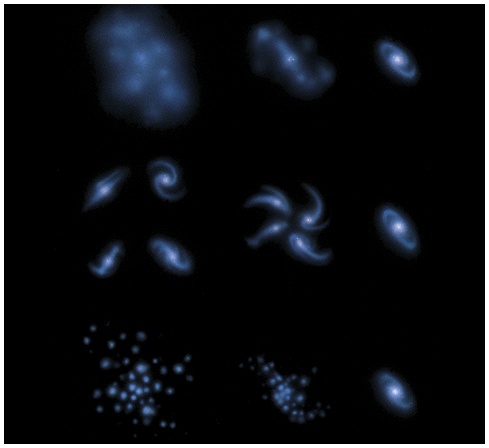- The Virgo Cluster is the closest rich cluster of galaxies.
- (A rich cluster has more than 1000 galaxies in it.)
- The giant elliptical galaxy M87 lies at the centre of Virgo.
- Two other giant elliptical galaxies, M84 and M86 are
in the upper-right-hand corner of the image.
- The diameter of the Virgo cluster is about 3 Mpc, so that the
galaxies are closer to each other on average than in the Local Group.
- Rich clusters are composed of mainly elliptical
galaxies and lenticular galaxies. This suggests that when
galaxies collide, elliptical galaxies may result.
|
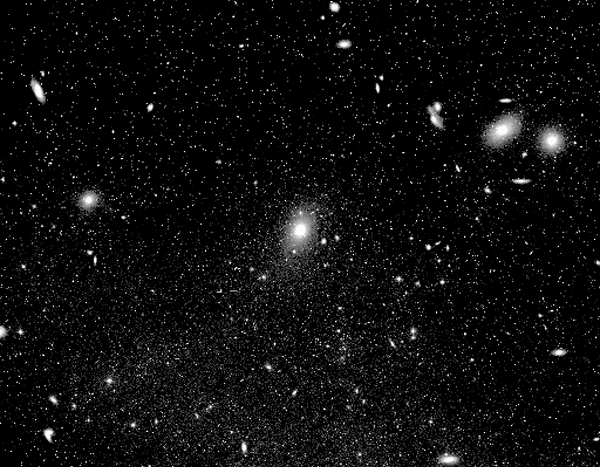
Click the image for movie |
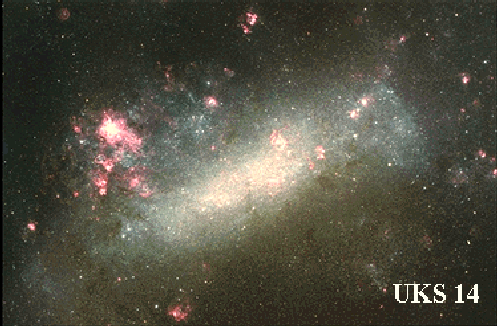

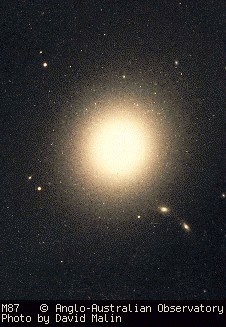
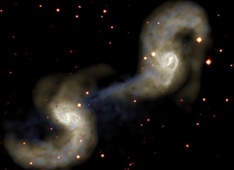
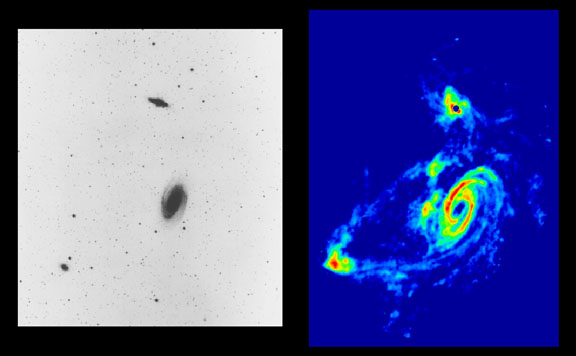
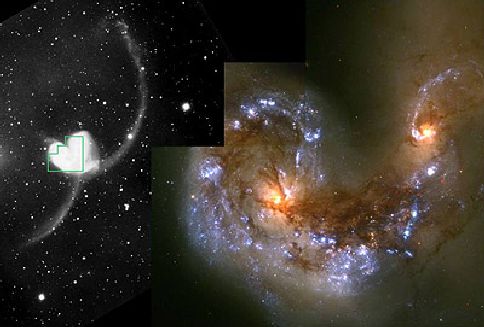
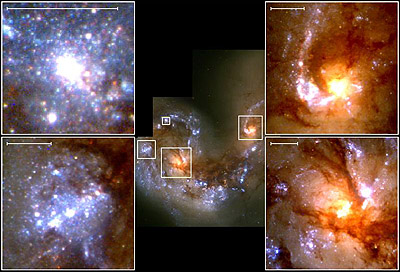
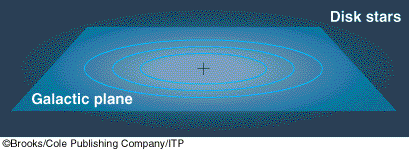
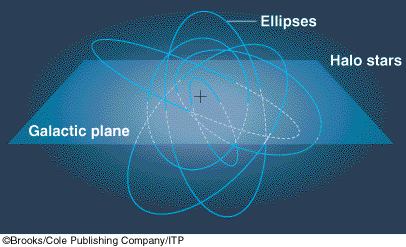 >
>